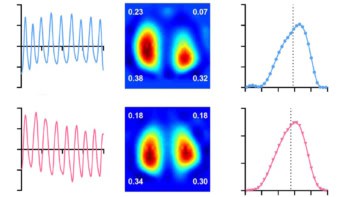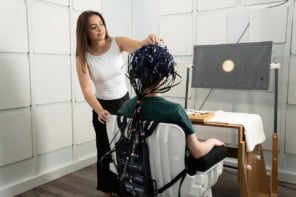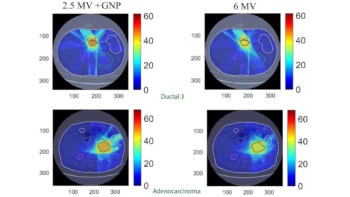
Shear wave elastography can detect the presence of residual cancerous tissue after brain tumour resection as effectively as expensive MRI scans, and 2.5 times better than surgeons, according to researchers from the UK. Should it prove as effective in wider trials, the approach could have the potential to improve surgical outcomes by helping to ensure that cancers are comprehensively removed during surgery, thereby reducing the chance of a recurrence.
When surgically removing brain tumours, ensuring that as much of the cancerous tissue is removed as possible without damaging healthy tissue is key to optimizing patient outcomes. The gold-standard approach to identifying residual tumour tissue is MRI. Unfortunately, such scans are expensive to perform, require facilities not commonly available in operating theatres, and are time-consuming to the point of being somewhat impractical, as individual scans can take in excess of an hour-and-a-half to perform.
As a result, many surgeons rely on visual inspection and tactile feedback to determine the nature of the tissue being considered for removal – with tumours typically being stiffer than regular brain tissue.
Taking advantage of this fact, medical physicist Jeffrey Bamber of the Institute of Cancer Research and colleagues turned to elastography, an ultrasound technique that determines the stiffness and stretchiness of matter and can thus map out areas that may represent tumour tissue. It works by measuring the passage of vibrational waves, which move faster through stiffer tissue.
“Shear wave scanning can quickly and affordably map the stiffness of brain and tumour tissue in patients during surgery,” Bamber explains. “Using this new type of scan, surgeons could greatly increase confidence that no cancerous tissue is going to be left behind after surgery.”
Tumour detection
In their study, the researchers recruited 34 patients aged between one and 62 years who were undergoing surgery to remove a brain tumour. During each operation, the team performed both regular 2D ultrasound and shear wave scans before, during and after tumour resection – alongside asking the surgeons to manually identify cancerous tissue before they were shown the results of the two ultrasound examinations. Following each operation, each patient was also given an MRI scan for comparison.
The researchers found that shear wave elastography was more sensitive in identifying residual tumour tissue after initial resection than either a standard ultrasound or a surgeon’s evaluation. Specifically, it detected tumour tissue with 94% sensitivity, compared with 73% and 36% for regular ultrasound and physical examination, respectively.
There was a drawback, however, with the shear wave scans only detecting tumour tissue with a 77% specificity – better than the 63% for 2D ultrasound, but not on par with the 100% success rate of the surgeons. This means that the new approach risks yielding false positives but, as the researchers explain, would work best when used in tandem with the surgeon’s evaluation.
“We have shown for the first time that this new tool is better than either a standard 2D ultrasound or a surgeon’s judgment on its own – and has the potential to supplement a surgeon’s opinion as a means of improving outcomes from operations,” Bamber says.
Furthermore, the researchers report that interoperative shear wave scans were as good as post-surgical MRIs at detecting the presence of residual tumour tissue – while still inherently more economical, faster and practical to deliver.
“Intraoperative ultrasound is a versatile and low-cost technique that has proven to be a helpful tool in the image-guided resection of brain tumours,” comments Santiago Cepeda, a neurosurgeon from the University Hospital Río Hortega in Spain, who was not involved in the present study. He added: “We will probably be able to include elastography within the neurosurgical armamentarium shortly.”
“Elastography definitely represents a reliable, cost- and time-effective advancement for oncological neurosurgery,” agrees Francesco Prada, who is the director of the acoustic neuroimaging and therapy lab at the Fondazione IRCCS Istituto Neurologico Carlo Besta in Italy.
The study is described in Frontiers in Oncology.



